|
Background
Sunbeam
became a household name throughout much of the world
as a result of the company’s many motor racing
successes, both at home and abroad. Motor racing is
a dangerous sport, and all too often accidents occur,
sometimes resulting in serious injury, or even loss
of life.
Until 1924, racing cars were
usually two-seaters, with one seat for
the driver and the other for the mechanic. Over the
years many mechanics were badly injured or even lost
their lives in horrific accidents. The story that
follows has a tragic ending, but it was not in vain,
it would change motor racing rules forever, and
reduce the number of injuries and loss of life.
Beginnings |
|
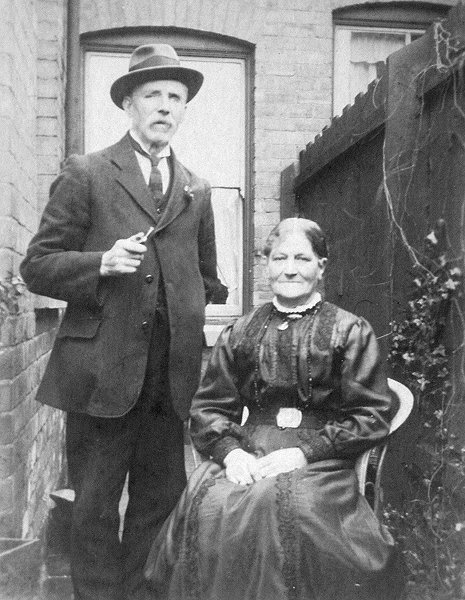
George and
Ann Barrett. Courtesy of Tom Barrett (Tom’s
nephew). |
George
Barrett was born in Ashdon, near Saffron Walden in
Essex. He moved to the Midlands to find a job in one
of the many factories in the area and started working
for Tangye of Birmingham, who made pumps.
George
married Ann Walton from West Bromwich on 26th
October, 1872 and they moved to Wolverhampton when
George got a job at Joseph Evans & Sons, who made
pumps at Culwell Works, Heath Town.
They lived at
number 3 Woden Road, which was close to the factory.
The couple
soon moved to Lea Cottage, Prestwood Road, and later
to 207 Prestwood Road.
They had 9 children: Albert,
Alfred, Elizabeth, Emily, Jessica, Lillian, Mary,
Tom, and William. |
|
Tom Barrett
Tom Barrett
was born on 21st November, 1891 at
Prestwood Road. He attended Holy Trinity day School,
and Sunday School at Heath Town. He also worshipped
at Holy
Trinity Church, where he was confirmed. He became a
member of the church choir, and was remembered at the
church as having a quiet dignity, and also full
of fun. |
|
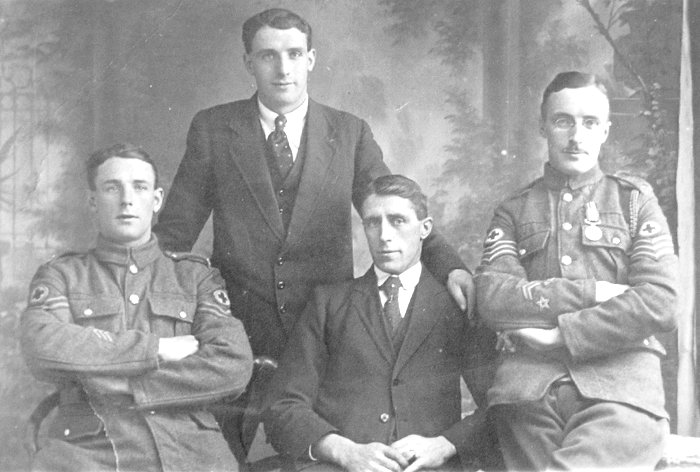
The Barrett
boys. Left to right: Albert, Tom,
William, and Alfred. Courtesy of Tom
Barrett (Tom’s
nephew). |
|
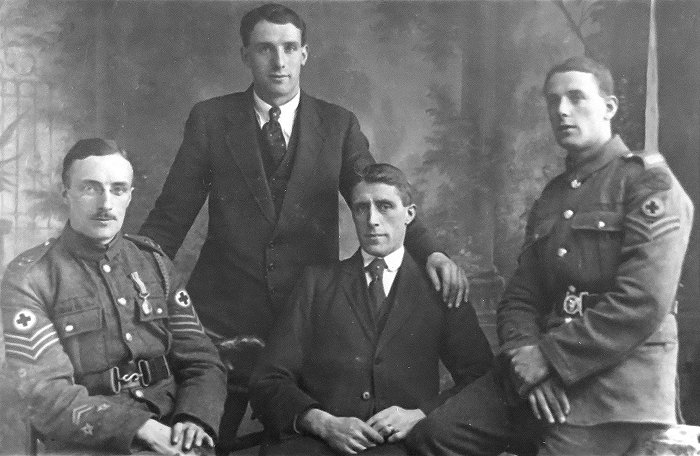
Another view of the Barrett
boys. Courtesy of Jan Jeavons. |
|
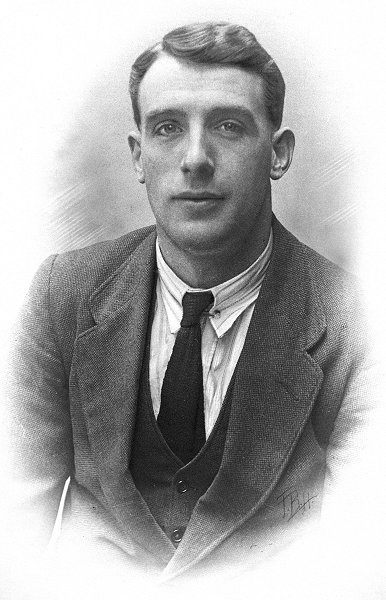
Tom Barrett. Courtesy of Jan
Jeavons. |
He served
his apprenticeship at Culwell Works along with his
eldest brother William, and afterwards worked for
Guy Motors, where he worked on the Dragonfly and
Wasp aero engines.
They were produced as part of the
company’s war work during the First World War, and
as Tom was involved in vital war work, he wasn’t
called-up into the forces.
At the end
of hostilities in 1918, Guy’s involvement with aero
engines ended, when any outstanding wartime orders
were cancelled.
The only other Wolverhampton company
that continued to produce aero engines after the war
was Sunbeam. Tom managed to get a job there to work
on aero engines.
At this time
orders for new aircraft engines were few and far
between and so the company decided to concentrate on
airship engines, as this form of transport appeared
to have a good future. |
| In 1919 two Maori engines
were fitted to the British R.33 airship, and another
two to the R.34. The R.34 even paid a visit to
Wolverhampton and flew over the Sunbeam factory.
Sunbeam also supplied Cossack
engines for the R.36 and R.37 airships. The last
airship to be fitted with Sunbeam engines was the
tragic R.38.
It was sold to the U.S. Navy and
crashed over the Humber estuary, on 23rd August
1921, killing a large number of the crew. The R.34
also tragically crashed earlier in the same year, in
bad weather, luckily without loss of life.
Airships were seen to be
dangerous, and it is believed that due to the crashes,
Tom wanted to work on something different, not
related to them. As a result he moved into the
Experimental Department where his expertise with
engines would be most welcome. He was now a
mechanic, working on the company’s successful racing
cars. |
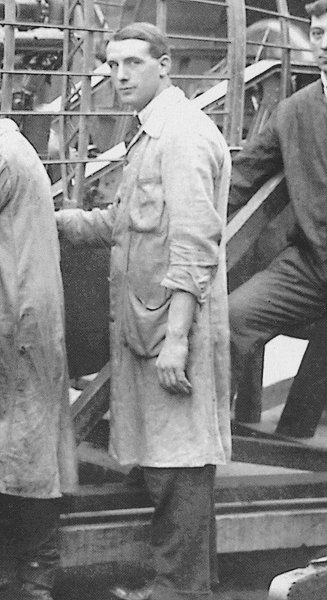
Tom at work on the airship
engines. |
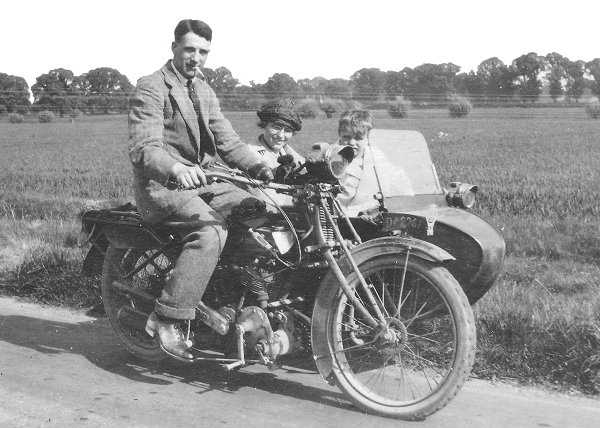 |
Tom enjoying a day out on
his motorcycle.
Courtesy of Jan Jeavons. |
| Not a lot is known about
Tom’s time in the Experimental Department, until the
tragic circumstances that would soon lead to his
untimely death. On September 2nd, 1924,
Dario Resta and mechanic Bill Perkins competed for
the company in the International Class ‘E’ Records
meeting at Brooklands, in a 6-cylinder Sunbeam Grand
Prix car. Things went badly wrong during the race
when a tyre came off the wheel rim and Resta lost
control of the car. Unfortunately Resta was
instantly killed and Perkins badly injured. |
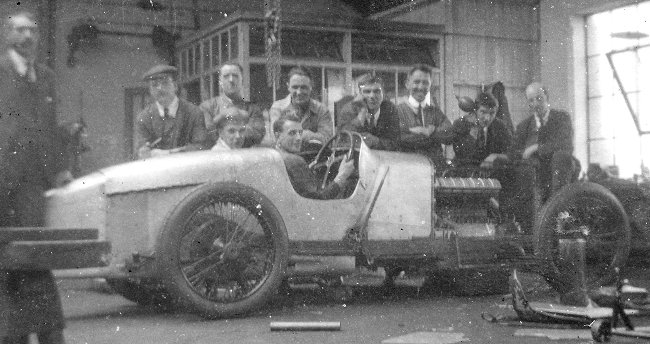
A nearly completed car in the
Experimental Department. Tom is at the wheel, and to
the right, leaning on the car is Alec Broome. Next
right is Jack Ridley. Courtesy of Jan Jeavons. |
| Tom married Lillian Ivy
Worthington-Roberts on 27th June, 1915.
She came from Cannock Road, Wolverhampton, and they
moved to 39 Burleigh Road, not too far from the
Sunbeam works. He
continued to be an active church goer and became a
member of St. John’s Church choir. |
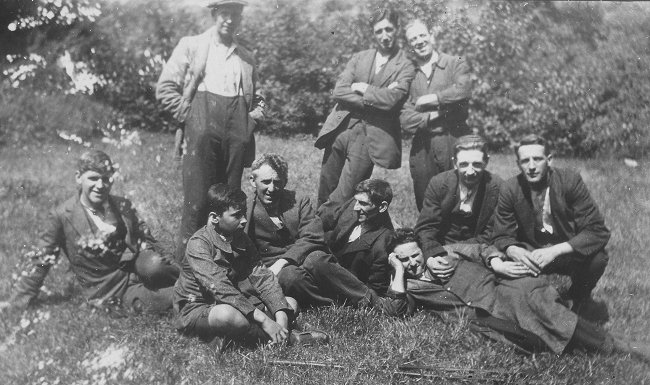
Sunbeam employees. Front row
left to right:
Alec Broome, ?, Jack Ridley, ?, Frank Bill (lying down), ?,
and Tom Barrett. Courtesy of Jan Jeavons. |
|
The 1924
Spanish Grand Prix
Sunbeam’s next major
event was the 1924 Spanish Grand Prix at
Lasarte, San Sebastian on September 27th. Two of
the company’s drivers, Henry Segrave and Kenelm
Lee Guinness took part in the race along with
their mechanics.
Bill Perkins should have joined the team as
Guinness’s mechanic, but he was still in
hospital recovering from the injuries that he
received in the Brooklands crash, three weeks
earlier. A replacement mechanic was required, and
so Tom agreed to go in Perkin’s place. |
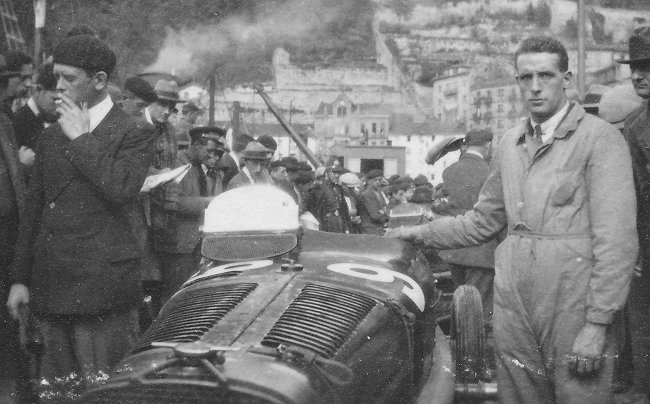
The two Sunbeam cars,
after being unloaded at the docks. On the left
is Kenelm Lee Guinness, and
on the right is Tom. Courtesy of Jan Jeavons. |
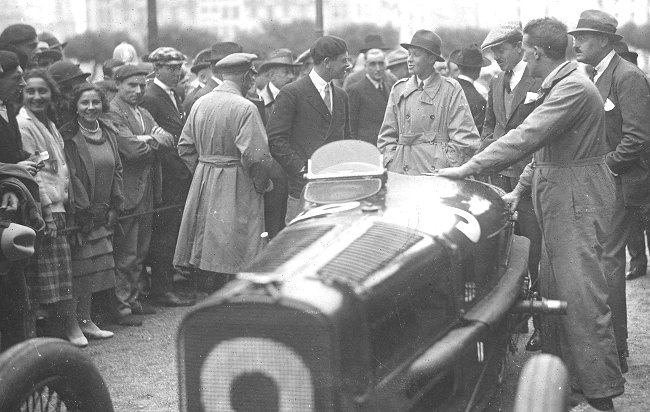
Spectators view the cars
on their arrival. Behind the car on the left is
Kenelm
Lee Guinness, next right talking to him is Louis
Coatalen. On the right next to the car is Tom.
Courtesy of
Jan Jeavons. |
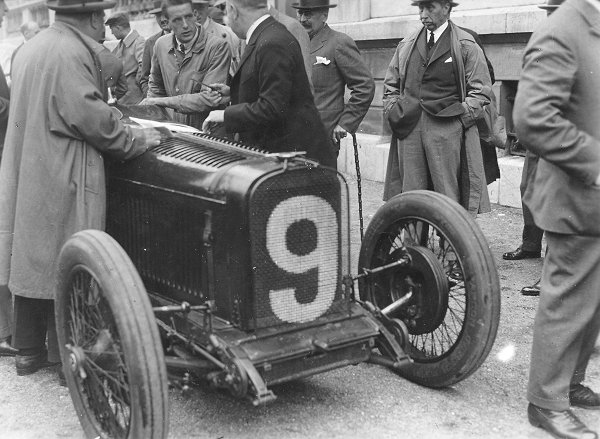 |
Another view of the
car on its arrival. Behind the car is Tom, who
is being interviewed, possibly by a local
newspaper reporter.
Courtesy of Jan Jeavons. |
| Tom’s wife Lillian often told
how he went to Spain as Segrave’s mechanic, the
other mechanic being Marocchi from Italy.
The senior of the two drivers
was Guinness, and as Marocchi’s English was not
good, and Guinness couldn’t speak Italian, he
preferred Barrett. Segrave agreed to Guinness’s
request as he could speak a little Italian, and took
Marocchi instead. |
|
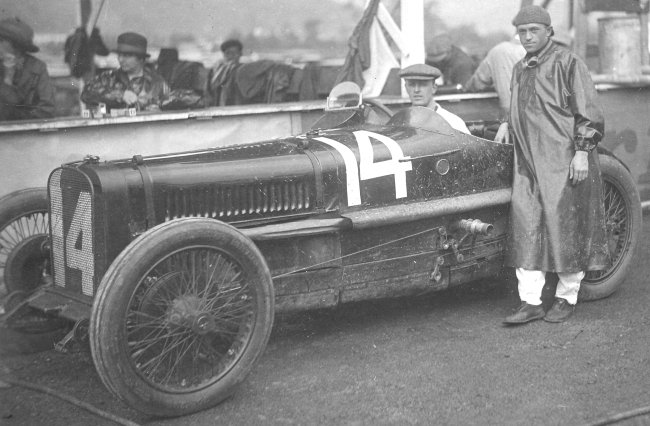
Segrave and Marocchi.
Courtesy of Jan Jeavons. |
|
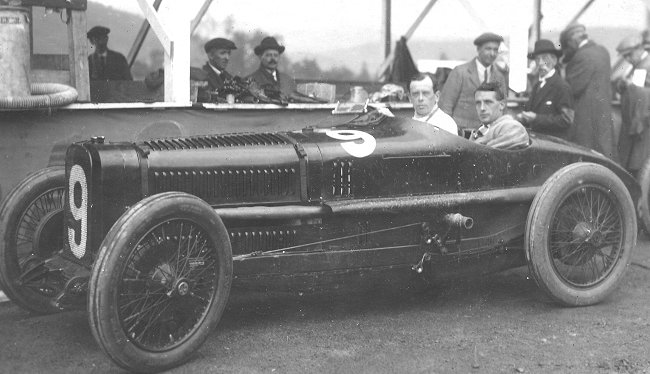
Kenelm Lee
Guinness and Tom, before the
start of the race. Courtesy of Jan Jeavons. |
|
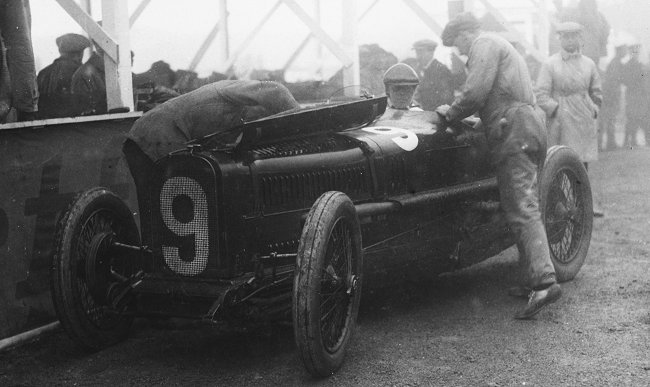
Another view of the car
before the race. Courtesy of Jan Jeavons. |
| In a letter
written to his mother and brother on the day before
the race (Friday 26th September), Tom
said that he was working long hours on the car. It
had taken 5 days to get the car and spares to the
course, and during that time he had to stay with the
car and keep an eye on it at all times. He also
mentioned that he was looking forward to returning
home. |
|
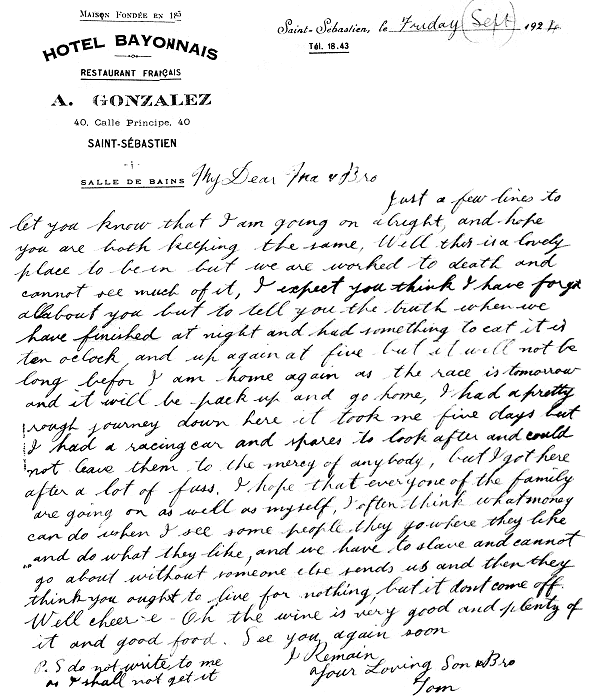
Tom's last letter.
Courtesy of Jan Jeavons. |
|
Segrave
mentioned in an article in the “Autocar” magazine
that there had been a great deal of rain before the
race. There were lots of curves to negotiate, and
the slippery road surface made the course very
dangerous indeed. It was decided that sand had to be
scattered onto the road to improve matters.
Unfortunately there was no sand locally, and so clay
was taken from the surrounding fields and used
instead. This converted the track into a very
dangerous slippery course, which led
to Tom's disastrous accident.
On the day
of the race all went well until the 11th lap. The
road surface was still slippery, and Guinness's
speeding car hit a rut in the road, causing him to
loose control. The two litre Sunbeam car left the
road at Urnieta, turned completely round, went up
the opposite bank, rolled over, then crossed the
road again before coming to rest. Guinness was
thrown clear, across a steep railway cutting,
and collided with telegraph wires. He suffered
serious head and limb injuries, and never raced
again. Unfortunately Tom Barrett was trapped
under the car, where he died from
the terrible injuries he received during the crash. The
cause of death is recorded in the coroner's report as
the result of a pulmonary haemorrhage. |
|
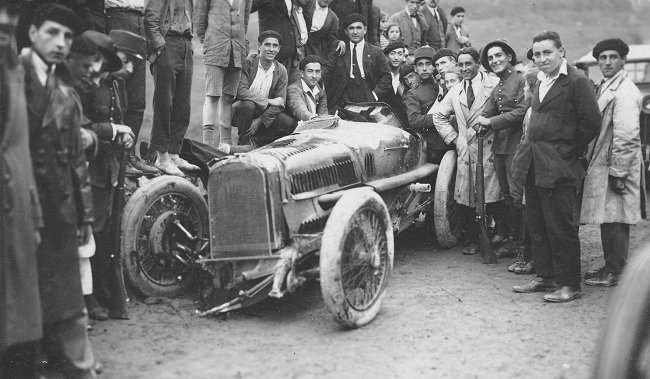
The damaged car after
the race.
Courtesy of Jan Jeavons. |
|
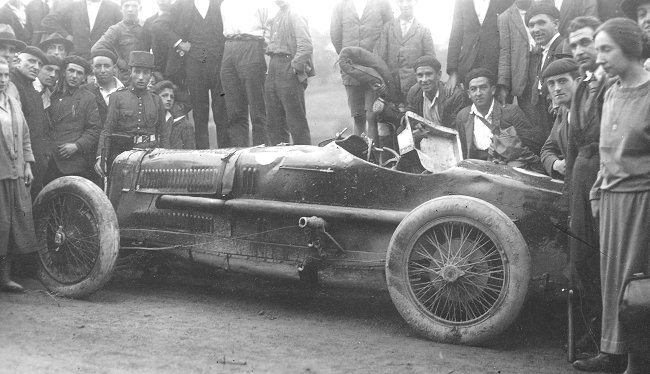
Another view of the
damaged car.
Courtesy of Jan Jeavons. |
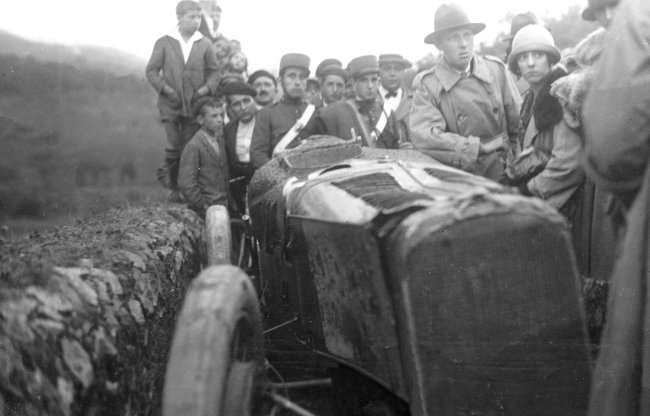
A final view of the
damaged car. Louis Coatalen is
standing behind the car (in the raincoat) and to
the right is a friend of his, a countess. The look on their faces
records the horror of what has just happened.
Courtesy of Jan Jeavons. |
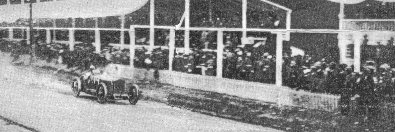 |
Segrave crossing
the line at the end of the 1924 Spanish
Grand Prix. He finished in first place.
From the Autocar Magazine, 10th October,
1924. |
| Segrave, his
mechanic, and Count Florio after the 1924
Spanish Grand Prix. Count Florio was the
donor of the cup. From the Autocar Magazine,
10th October, 1924.
The sad look on
Segrave's face is presumably because he had
just heard about the tragic
consequences of the accident that had just happened to his
colleagues. In later events, Segrave wore a
helmet, most probably because of this
accident. |
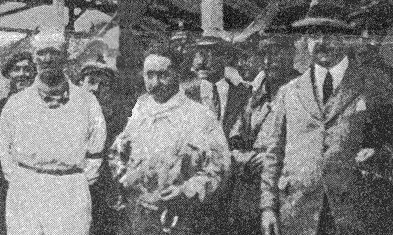 |
|
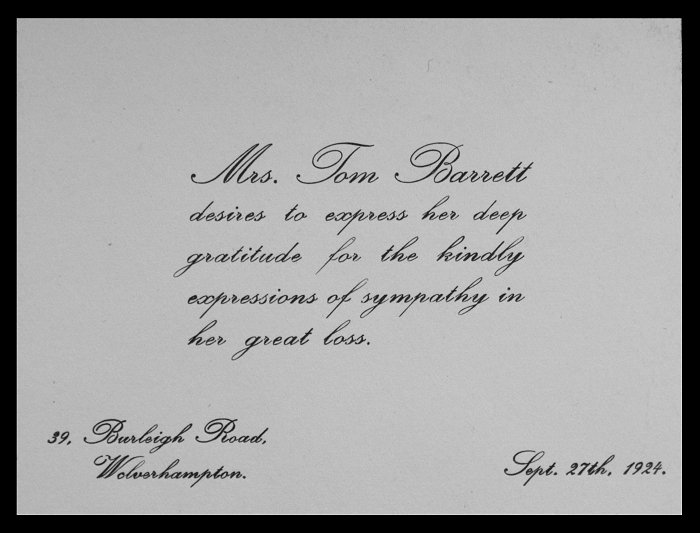
Courtesy of Jan
Jeavons. |
|
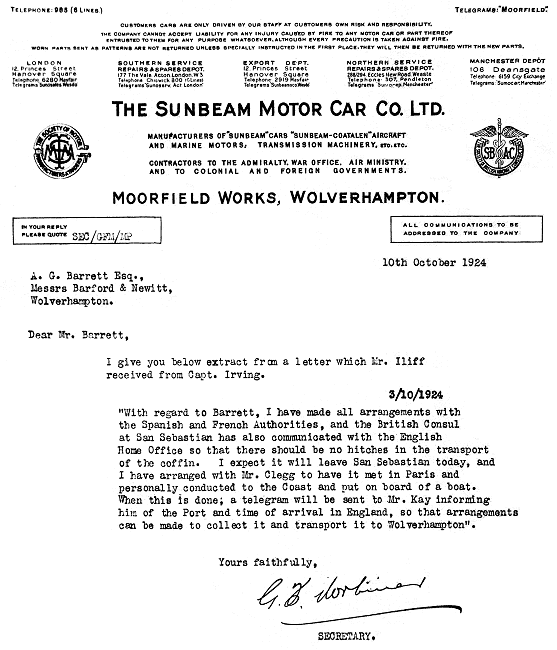
Courtesy of Jan Jeavons. |
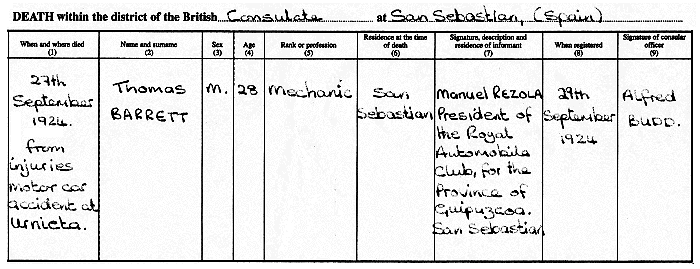
The details on Tom's death
certificate. At the time he was 32 years old,
not 28 as stated on the certificate. Courtesy of
Jan Jeavons. |
|
Tom’s funeral took place on October 16th
at his familiar Heath Town Church. After
the funeral he
was buried in the graveyard behind the
church. Many of Tom's ex-colleagues from both
Sunbeam and the Joseph Evans factory came along to
pay their last respects.
The following donations
were made towards the cost of the funeral:
Sunbeam Motor Car
Company Limited
Amalgamated Engineering
Union (AEU)
The Works Club
Sunbeam employees
Prudential Assurance Company
Limited
Royal Automobile Club of
Spain |
£10.00
£12.00
£10.00
£31.2.8
£50.00
£50.00 |
|
Because of
the
accident, the rules regarding
mechanics riding in cars were
changed, and they would no longer
ride in the car with the driver.
Due to this,
Tom’s untimely death must have saved
many lives, and greatly reduced the
number of injuries sustained in the
sport.
After the
accident, Lillian Barrett was given a
job at Sunbeam, in the office. She
later worked as an auxiliary nurse
at the Royal Hospital. |
|
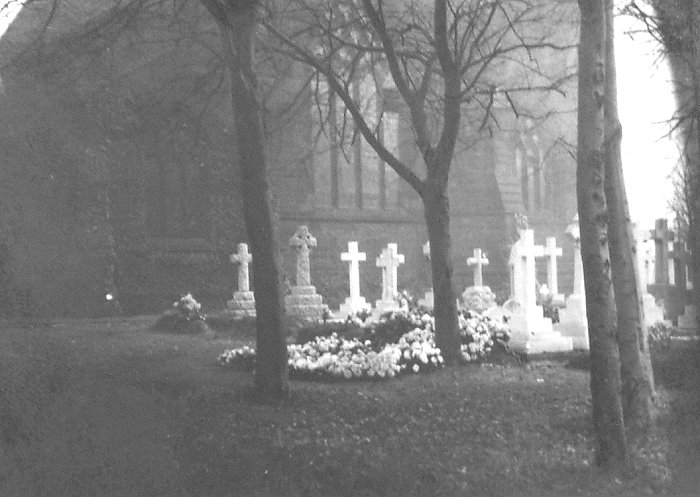
Tom's grave at
Heath Town. Courtesy of Jan Jeavons. |
|
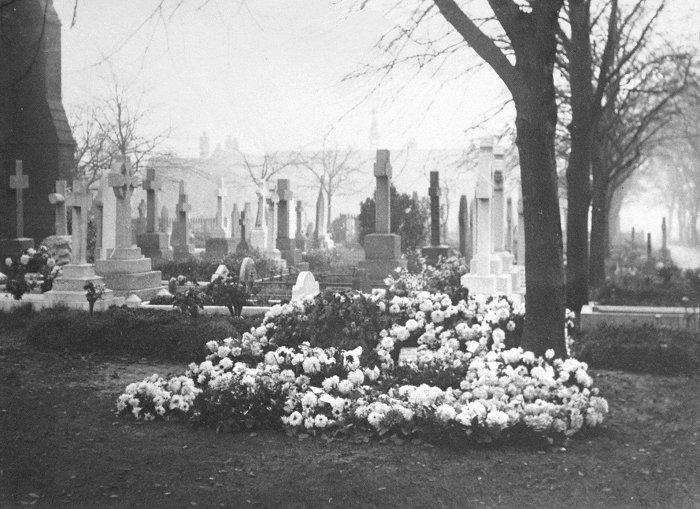
Another view
of the grave. Courtesy of Tom Barrett (Tom’s
nephew). |
|
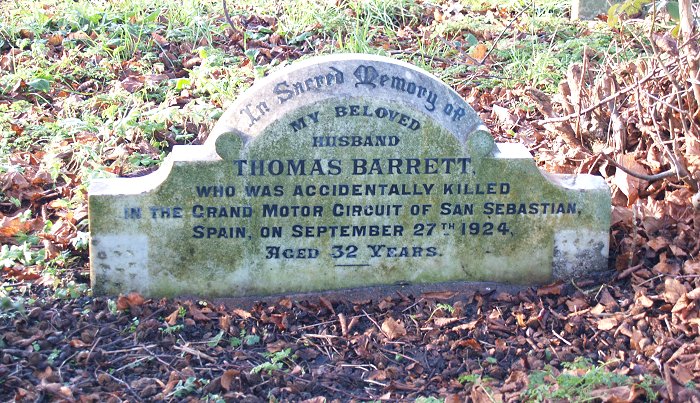
The grave as it is
today. |
A copy of a cutting from an
unknown newspaper, kindly lent by Jan Jeavons:
Tributes of Respect
Funeral of the late
Mr. Thomas Barrett.
The large
congregation at Holy Trinity Church,
Heath Town, this (Thursday) afternoon on
the occasion of the funeral of the late
Mr. Thomas Barrett, of 39 Burleigh Road,
was evidence of the esteem in which he
was held.
Mr. Barrett, who
was in the employ of the Sunbeam Motor
Car Company Limited, it may be recalled,
was killed in the Spanish Grand Prix
motor race at San Sebastian on September
27th. The funeral had been delayed owing
to the many formalities which had to be
complied with.
Brought From Spain
The body, enclosed
in a shell and placed in a Spanish oak
coffin, covered with black velvet, bound
with black silk moiré ribbon, was
brought overland to Calais, and from
Dover to Wolverhampton by road.
The choral service
at the church was conducted by the vicar
(Rev. J. W. Morison) and the Rev. H. T.
Samuel (vicar of St. John’s,
Wolverhampton). Members of the choir
from both churches took part. At the
conclusion, the organist (Mr. W. Davies)
played Chopin’s ‘Marche Funebre’.
The Rev. J. W.
Morison gave a short address, in which
he recalled Mr. Barrett’s associations
with the day and Sunday school, and the
choir of Holy Trinity, mentioning also
that he was a chorister at St. John’s
Church, spoke of his devotion to duty,
said how he was beloved of his mates,
and expressed deep sympathy with the
family and relatives in the loss they
had sustained.
The mourners were
Mrs. T. Barrett (widow), Mr. A. G.
Barrett, Master Dennis Barrett (son),
Mr. and Mrs. Roberts, Mr. and Mrs.
Sedgley, Mr. and Mrs. Harding, Messrs.
Fred and Bert Roberts, Mr. and Mrs. Ash,
Mr. and Mrs. Tonks, Mr. A. K. Barrett,
Mrs. Cole, Miss Sedgley, and Mr.
Johnson.
Flowers from Former
Mates
The coffin was
borne to the chancel and afterwards to
the grave by Messrs. Murray, Stokes,
Taylor, Ridley, Kettle, and Scott, six
employees of the Sunbeam Company; four
from the experimental shop and two from
the engine erection shop.
Among those present
were Sir Algernon Lee Guinness, and the
following representatives of the Sunbeam
company: Brig. General Huggins, Messrs.
C. B. Kay, G. F. Mortimer, S. Reed, T.
Harrison, R. Webster, and V. Cozens.
On the coffin plate
was the inscription, “Thomas Barrett.
Died September 27th, 1924. Aged 32
years,” and conspicuous was a large
wreath of Spanish crystallised flowers,
to which the Sunbeam racing colours were
attached, together with the inscription,
in oxidised silver letters, “T. Barrett,
E.L., R.A.C.G.”
Other floral
tributes were sent by Sir Algernon Lee
Guinness, Mr. Kenelm Lee Guinness, the
Sunbeam Motor Car Company Limited,
employees at Moorfield Works, the
outworkers, and the experimental
department, Captain Irvine, Clement
Talbot Limited, St. John’s Choir, and
former mates at Messrs. Joseph Evans &
Sons. |
|
|
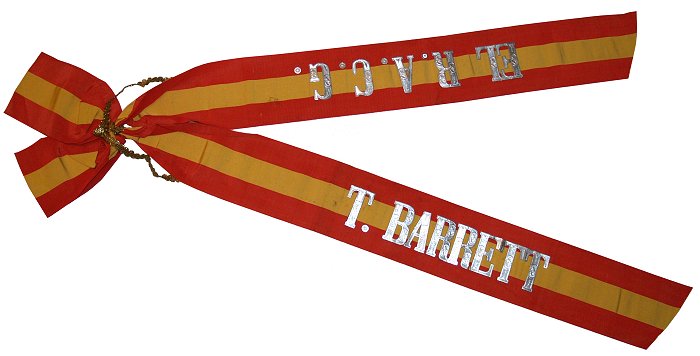
The ribbon that was draped
over the coffin at the funeral. Courtesy of Jan
Jeavons. |
| I would like to thank
Jan Jeavons, Tom’s granddaughter, and Tom
Barrett, Tom’s nephew, for their help in
producing this section. |
 |
Return to the
previous page |
|
|